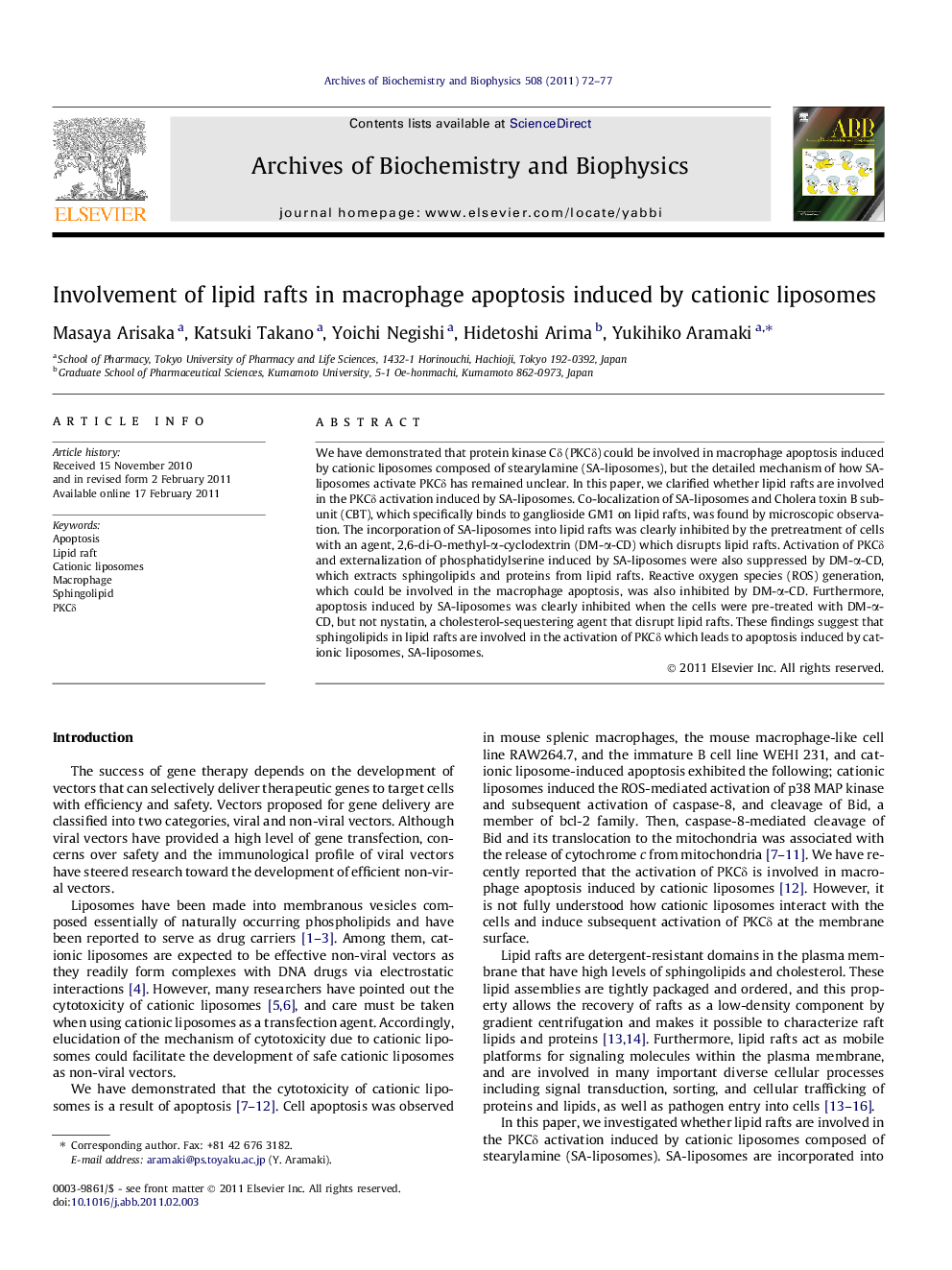| Article ID | Journal | Published Year | Pages | File Type |
|---|---|---|---|---|
| 1925836 | Archives of Biochemistry and Biophysics | 2011 | 6 Pages |
We have demonstrated that protein kinase Cδ (PKCδ) could be involved in macrophage apoptosis induced by cationic liposomes composed of stearylamine (SA-liposomes), but the detailed mechanism of how SA-liposomes activate PKCδ has remained unclear. In this paper, we clarified whether lipid rafts are involved in the PKCδ activation induced by SA-liposomes. Co-localization of SA-liposomes and Cholera toxin B subunit (CBT), which specifically binds to ganglioside GM1 on lipid rafts, was found by microscopic observation. The incorporation of SA-liposomes into lipid rafts was clearly inhibited by the pretreatment of cells with an agent, 2,6-di-O-methyl-α-cyclodextrin (DM-α-CD) which disrupts lipid rafts. Activation of PKCδ and externalization of phosphatidylserine induced by SA-liposomes were also suppressed by DM-α-CD, which extracts sphingolipids and proteins from lipid rafts. Reactive oxygen species (ROS) generation, which could be involved in the macrophage apoptosis, was also inhibited by DM-α-CD. Furthermore, apoptosis induced by SA-liposomes was clearly inhibited when the cells were pre-treated with DM-α-CD, but not nystatin, a cholesterol-sequestering agent that disrupt lipid rafts. These findings suggest that sphingolipids in lipid rafts are involved in the activation of PKCδ which leads to apoptosis induced by cationic liposomes, SA-liposomes.
Research highlights► Lipid rafts is implicated in macrophage apoptosis induced by cationic liposomes. ► Lipid rafts is considered to be linked to PKCδ activation. ► Sphingolipids in lipid rafts could be involved in macrophage apoptosis induced by cationic liposomes.
